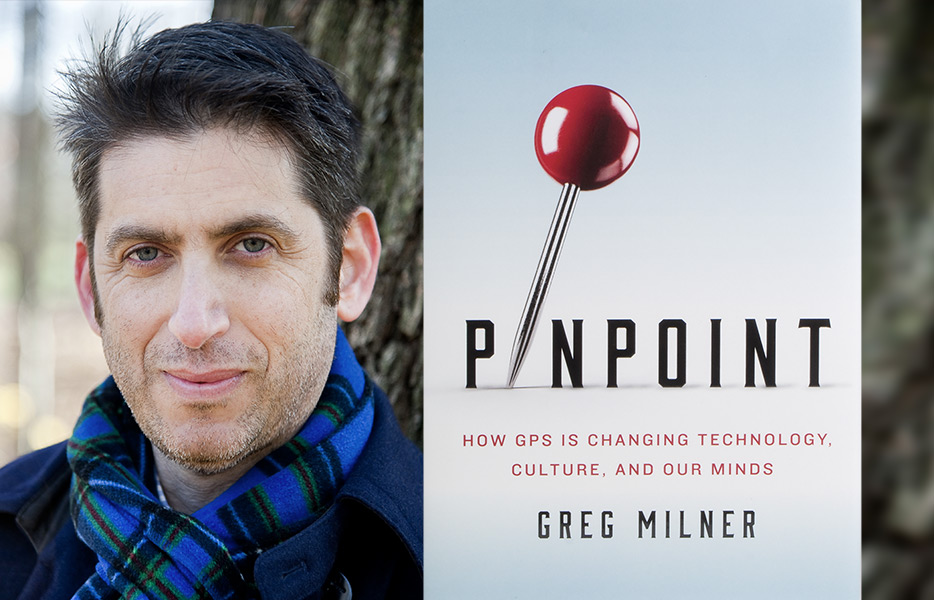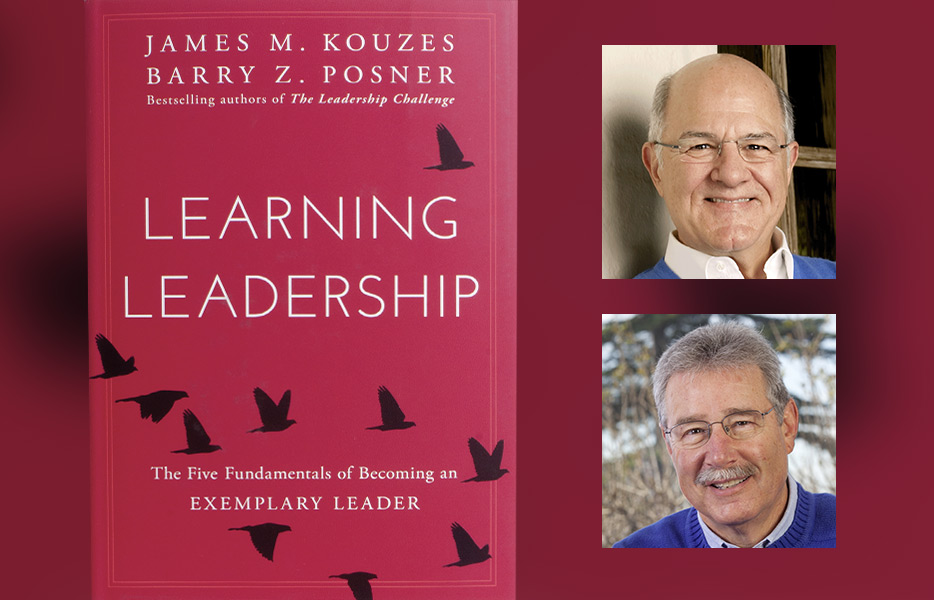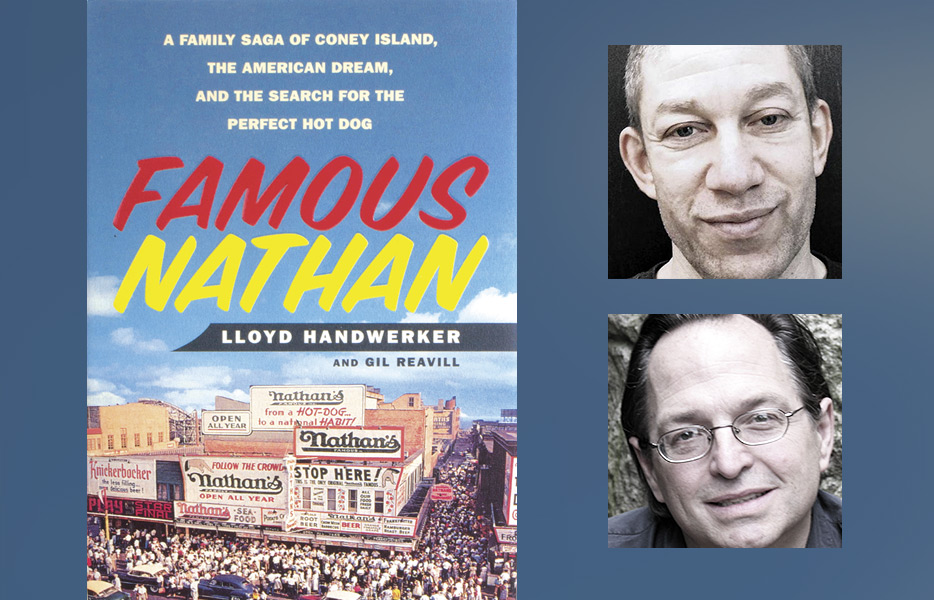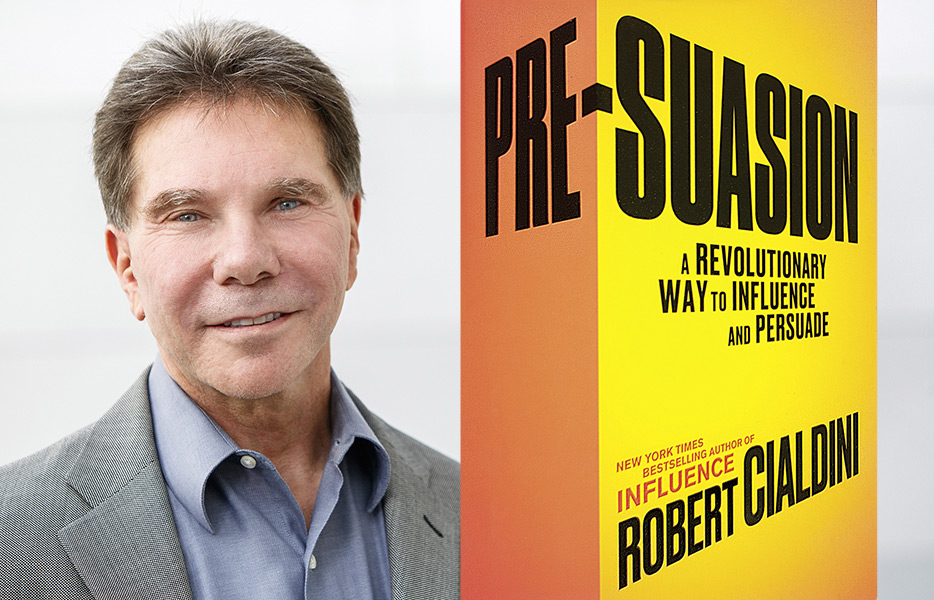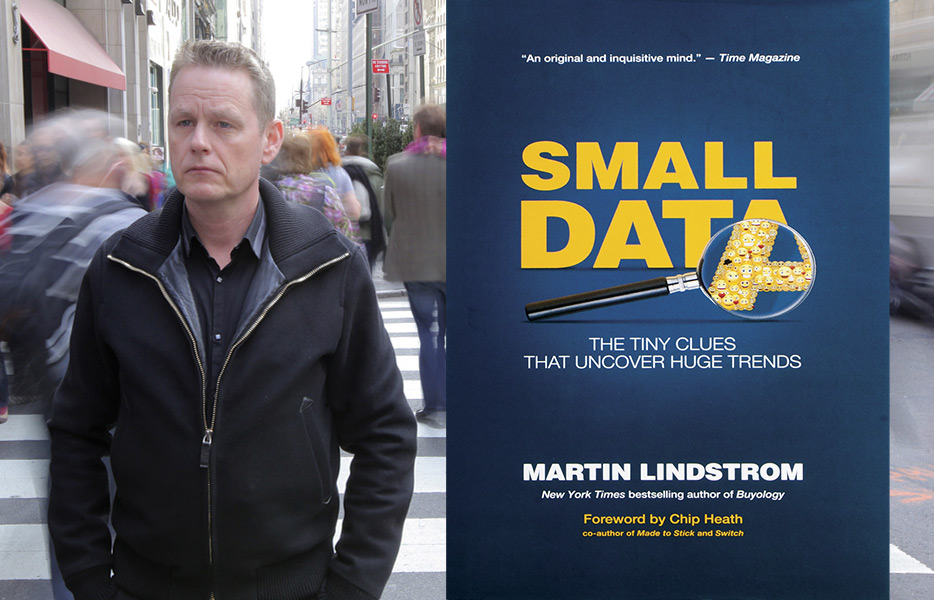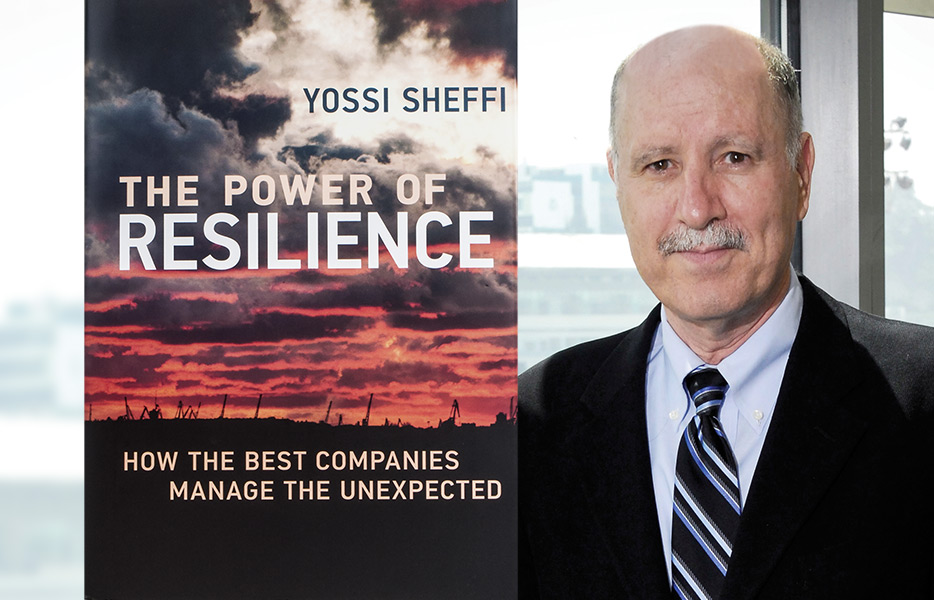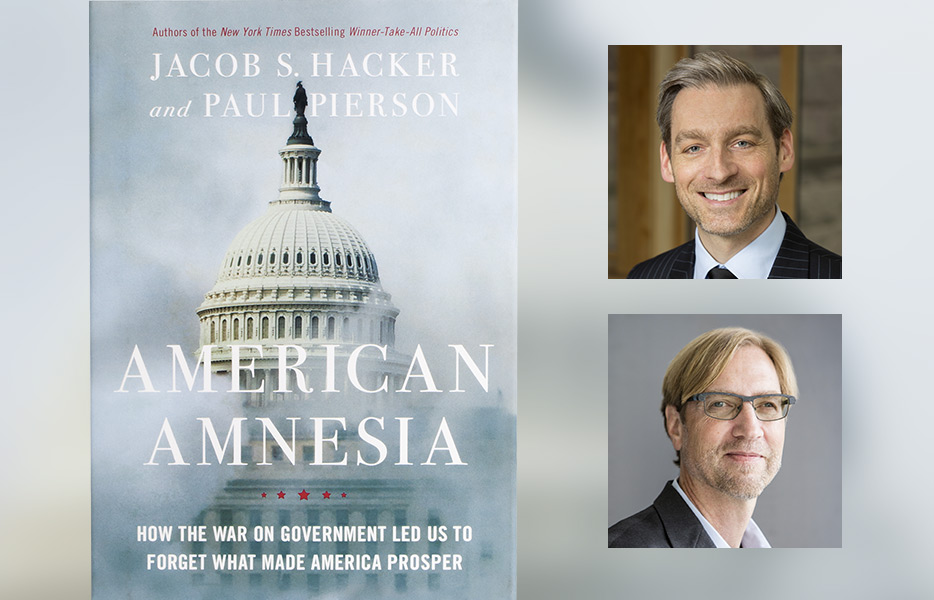Soluções que tornam o mundo melhor!!!!
Informações, reportagens extraídas da internet com conteúdos interessantes, curiosidades, conhecimento. Simples, prático e direto ao ponto. Material para guardar e ler sempre.
quarta-feira, 21 de dezembro de 2016
sexta-feira, 11 de novembro de 2016
Inspirações de gente grande
Ter alguém para se inspirar pode dar aquele gás que faltava para corrermos atrás dos nossos sonhos. Por isso mesmo, quem quer empreender e ter um bom modelo de negóciomuitas vezes se espelha em pessoas bem-sucedidas.
Quem nunca imaginou como é viver com uma conta bilionária no banco? Contudo, muitas vezes esquecemos que, para ganhar a fama e a fortuna de hoje, muitas pessoas traçaram um caminho de luta e algumas decepções.
Exemplo disso são os grandes investidores. Quem conseguiu enriquecer no Mercado de Ações com certeza deve servir de exemplo para muitos iniciantes neste universo.
O Mercado Financeiro não é simples e quem consegue entendê-lo tem muita sabedoria para compartilhar por aí.
Foram as experiências boas, como lucrar milhões em apenas uma transação, e também as ruins, como perder seis dígitos após um ato por impulso, que ajudaram essas pessoas a conquistar o sucesso que têm atualmente.
Mais do que apenas invejar a riqueza alheia, que tal aprender com quem chegou lá? Veja agora ensinamentos de investidores de sucesso para começar a seguir já!
Benjamin Graham: motivos são tão importantes quanto objetivos
Graham foi um professor aclamado da Universidade de Columbia. Parte de sua fama surgiu por causa de seus ensinamentos sobre a análise fundamentalista, uma forma de avaliar onde investir dinheiro a partir das perspectivas de longo prazo das empresas.
Muitas pessoas que hoje iniciam no mundo dos investimentos seguem lições de Graham. Isso porque, apesar de ter nascido em Londres no fim do século XIX, seus estudos ainda são bastante atuais.
Quer aprender com ele? Saiba que estar certo não é suficiente. Você precisa estar certo pelos motivos corretos. Afinal, de nada adianta estar convicto do que faz se seus motivos não estão alinhados com seus objetivos.
A convicção, inclusive, está bastante presente em suas lições. Para ele, é preciso ter paciência e disciplina para se manter firme em suas convicções, especialmente quando o mercado insiste que você está errado.
Assumir uma posição e se manter fiel a ela parece simples na prática, mas quando o mundo segue por outro caminho, podemos começar a duvidar de nós mesmos. Ouça a voz da sabedoria!
Warren Buffett: fuja do lugar comum
Benjamin Graham foi professor de Buffett e chegou a ser considerado por seu pupilo um dos homens mais importantes de sua vida.
O apelido, “oráculo de Omaha”, não surgiu à toa. Aos 86 anos, Warren Buffett permanece há quase duas décadas entre os primeiros colocados na lista de mais ricos do mundo.
A frente de sua empresa, a Berkshire Hathaway, ele publica anualmente cartas em que dá dicas valiosas a seus leitores. Em uma delas, Buffett escreveu que não se pode ficar obcecado pelo sobe e desce do mercado.
O que realmente importa para ele é estar focado no jogo e não no placar.
Outra lição que podemos aprender com ele é em relação aos riscos. Em suas palavras, “o risco vem de não saber o que você está fazendo”.
A falta de compreensão sobre como agir também ganhou destaque quando ele afirmou que é melhor não investir em um negócio que você não entende.
Ele também indica remar contra a maré: “A hora de se interessar por ações é quando ninguém mais está interessado.
Você não pode comprar o que é popular e achar que está agindo de maneira correta em relação a seus investimentos”.
George Soros: erros também são aprendizado
Quando se fala em investidor de sucesso, outro nome que surge espontaneamente é George Soros. Sua fortuna chega a mais de 20 bilhões de dólares!
Entre suas maiores proezas no Mercado Financeiro, está o lucro de 1 bilhão de dólares conquistado em 1992 ao investir contra a libra esterlina.
Ele é um dos fundadores do Quantum Fund, um dos maiores e mais lucrativos fundos de hedge existentes. Além do sucesso nos investimentos, Soros também se deu bem na literatura. Aos 80 anos, ele é autor de quase uma dezena de livros sobre o Mercado Financeiro.
Soros não crê que é possível se divertir investindo bem. “Se investir é entretenimento e se você está se divertindo, provavelmente você não está ganhando dinheiro”. Segundo ele, o bom investimento, infelizmente, é chato.
E ele não tem medo de reconhecer suas fraquezas. Soros já admitiu que acaba se deixando tomar pela euforia e também pelo desespero. Mas ressaltou que só deu a volta por cima porque reconheceu seus próprios erros.
É importante não só reconhecer, como também corrigir as falhas. “Uma vez que nós entendemos que os seres humanos são imperfeitos, não há vergonha em estar errado,mas sim em falhar por não conseguir corrigir nossos erros”. Ou seja, Soros é adepto do ditado que diz: errar é humano.
Jim Rogers: tenha fé em si mesmo
O fundo criado com a parceria entre Rogers e Soros é considerado um dos mais rentáveis da história. Para se ter uma ideia, em dez anos esse fundo chegou a avançar 4.200%!
A sociedade com Soros foi tão frutífera que Jim Rogers conquistou o que muitos sonham: aposentar-se aos 40 anos. Um verdadeiro entusiasta do mercado asiático, ele atualmente mora em Cingapura e atua como um observador profissional do mercado.
Rogers realmente acredita que o oriente é o futuro dos negócios, tanto é que uma de suas sugestões é que todo mundo nascido a partir de 2003 deve aprender a falar mandarim.
Ele também aconselha a todos traçar seu próprio caminho. Rogers já confessou que, no início da carreira, se deixou levar pela opinião dos outros e se deu mal.
“Com o tempo, vi que quando eu discordava dos outros, eu estava certo. Então, passei a seguir minha intuição e deixar os outros para lá”, disse.
Ele também escreveu diversos livros sobre economia e investimentos. Um deles, “A Gift to My Children: A Father’s Lessons for Life and Investing”, traz um ensinamento interessante para quem não é muito fã de mudanças.
Um trecho da obra diz que aqueles que não conseguem se ajustar às mudanças, vão ser varridos por elas. Aqueles que aceitarem as mudanças e reagirem de acordo, vão se beneficiar com elas. Flexibilidade é o segredo do sucesso!
Jorge Paulo Lemman: sonhar não custa nada
Claro que esta lista não iria terminar antes de ter ao menos um brasileiro por aqui.
Jorge Paulo Lemman é um nome forte em terras tupiniquins e também internacionalmente. Tanto é que ele foi chamado de “conquistador da América” pela revista Forbes.
Entre suas conquistas está a criação da Ambev e investimentos em diversas empresas do ramo alimentício no país, como Heinz, Burguer King e Lacta.
Contudo, sua mais nova área de investimento é a tecnologia. Este ano, ele investiu no Snapchat, rede social com valor de mercado superior a US$ 20 bilhões.
Uma máxima dele para inspirar as pessoas é sonhar longe. Para ele, ter um sonho grande dá o mesmo trabalho de ter um sonho pequeno. Então, por que não querer ir além?
Lemman também dá muito valor ao empreendedorismo, já que, segundo ele, os empreendedores vão salvar o Brasil. “Peço que eles não desanimem na primeira dificuldade, peço que eles continuem”, completa o pensamento.
As dificuldades são um dos principais motivos para muita gente desistir antes de alcançar um objetivo. Ele deixa claro que nada acontece em linha reta, já que sempre vão haver altos e baixos.
O importante, para Lemman, é constantemente aprender com as dificuldades e sempre ver nelas uma oportunidade.
Exemplos de sucesso existem vários por aí, tanto de grandes investidores quanto de pequenos empresários. Sabe o que todos eles têm em comum? A humildade de aprender com os próprios erros e a disciplina para prosperar em meio à adversidade.
O Mercado Financeiro foi palco do sucesso dos investidores citados e pode ser o seu também. Sabe o melhor? A Bolsa de Valores é o melhor investimento do ano. Ainda dá tempo de aproveitar e mudar de vida!
Agora é um excelente momento para empreender e investir. É hora de colocar a mão na massa e tirar seus sonhos do papel!
Autoria: Ana Cláudia Inez, graduada em Relações Públicas, mestre em Processos Comunicacionais e estudiosa do mercado de ações. Integrante da equipe Toro Radar, é responsável pela comunicação e relacionamento da empresa com parceiros em todo o país.
Fonte: Blog Saia do Lugar
quinta-feira, 10 de novembro de 2016
Best Business Books 2016
Technology
In Pinpoint: How GPS Is Changing Technology, Culture, and Our Minds (W.W. Norton, 2016), Greg Milner takes what might seem to be a mundane subject — the Global Positioning System — and tells an intricate story about the relationship between technology, the economy, and human ability. He also implicitly makes two crucial points about the nature of technological innovation. The first is that public investment in new technologies can create enormous spillover benefits for the economy as a whole. GPS would not exist, after all, had it not been for the Cold War, which spurred the U.S. government to invest heavily in technologies that were then repurposed for civilian use, including the transistor, the microprocessor, and GPS. The second lesson in Pinpoint, our choice for the best book of 2016 on technology, is that the value of powerful new technologies isn’t always apparent at the time they’re introduced. The U.S. Air Force, for instance, kept trying to kill funding for GPS, because it felt that navigation systems were already accurate enough. Milner shows that civilians grasped the real usefulness of GPS long before most of the military did. That’s why long-term, patient investments — whether on the part of the government or in the private sector — are so essential to technological progress.
—Adapted from “The Human Function,” by James Surowiecki
Talent & Leadership
In addressing the perennial question of whether leaders are born or made, James M. Kouzes and Barry Z. Posner, the authors of Learning Leadership: The Five Fundamentals of Becoming an Exemplary Leader (Wiley, 2016), observe that they’ve never met a
leader who wasn’t born, which is to say that everyone has the ability to become a better leader. The “born leader” trope, in their view, is antithetical to the way real-life leaders operate. It functions as a fable or folk legend that discourages people at every level from working to become better leaders. Anyone with a desire to improve his or her own leadership skills can benefit from reading this deeply encouraging book, which is our choice for the best book of 2016 on talent and leadership.
—Adapted from “Thinking It Through,” by Sally Helgesen
Narratives
The development of Nathan’s Famous Hot dogs “represented a complicated kind of choreographed ballet,” write Lloyd Handwerker and Gil Reavill in Famous Nathan: A Family Saga of Coney Island, the American Dream, and the Search for the Perfect Hot Dog (Flatiron Books, 2016), whose details include the precise amount of water in the meat filling and the skills of a longtime employee who could serve 60 hot dogs a minute. Nathan Handwerker, who was born in Austrian-occupied Galicia, Poland, in 1892 and who emigrated to the U.S. in 1912, “was desperate to succeed,” his grandson writes in our choice for 2016’s best business book on narratives. And succeed he did. During its heyday of the 1950s, the business grossed $3 million annually. The success of Nathan’s Famous was “the direct result of one man’s will to excel, to be ever watchful, to devote himself to the proposition that quality can be gained and maintained only by ceaseless, unflagging effort,” writes his grandson. This simple story is elevated by the insight it offers into Nathan’s archetypal character, as well as by the rich historical context and lovely writing. Perhaps it takes a kind of brilliance to have the big idea, and another kind of brilliance to make it work.
—Adapted from “Turning Dreams into Reality,” by Bethany McLean
Management
Our choice for best business book of 2016 on management, explores an insight that came to Robert Cialdini, author of Pre-Suasion: A Revolutionary Way to Influence and Persuade (Simon & Schuster, 2016), when he “infiltrated the training programs of a broad range of professions dedicated to getting us to say yes.” He discovered that “the best persuaders become the best through pre-suasion — the process of arranging for recipients to be receptive to a message before they encounter it.” He argues that it is possible to create what he calls privileged moments, “identifiable points in time when an individual is particularly receptive to a communicator’s message.” Cialdini offers many tips and tactics in this handbook on the ways and means of pre-suasion, which managers can and should use to become more effective influencers. But he also devotes considerable effort to persuading us to wield pre-suasion in an ethical manner.
—Adapted from “Pre-Suasion, Problem Solving, and Process Design,” by Theodore Kinni
Marketing
If big data — by its name alone — implies that it holds the answer to everything, Martin Lindstrom dispels that belief when he says frankly, it ain’t all that. “For all the valuable insights big data provides,” he notes in Small Data: The Tiny Clues That Uncover Huge Trends (St. Martin’s Press, 2016), “the Web remains a curated, idealized version of who we really are. Most illuminating to me is combining small data with big data by spending time in homes watching, listening, noticing and teasing out clues to what consumers really want.” Part detective story, part anthropological study, and part travelogue, Small Data, our choice for best business book on marketing in 2016, follows Lindstrom to Russia, China, Brazil, Saudi Arabia, Austria, and other locales as he tries to answer questions including: Why don’t the Chinese use bedspreads? What is the significance of Russians’ love of refrigerator magnets? And just what are teenage girls in Europe doing between 6:00 and 6:30 every morning? In answering each of these questions, Lindstrom is striving to solve a marketing problem. He closes the book by revealing his process, seven steps that can lead marketers all the way from data collection to marketing concept.
—Adapted from “Big Marketing Gets Personal,” by Catharine P. Taylor
Strategy
Most corporate managers and business school professors simply accept globalization as an unalloyed good. After all, if your goal is to sell more of something, more potential customers must be better than fewer. But although globalization does hold out the promise of boosting revenues, cutting costs, or both, it also exposes companies to all manner of new risks. Yossi Sheffi’s The Power of Resilience: How the Best Companies Manage the Unexpected (MIT Press, 2015), our choice for the best business book on strategy this year, does an excellent job of covering the most important of those risks as well as best practices in everything from preparation to monitoring to drawing up crisis playbooks. And it does so while focusing on a relatively obscure corporate competence: supply chains. An entire book on supply chains would seem to be a slog and particularly narrow. But The Power of Resilience is actually a bit of a page turner, with implications that go beyond tactics to strategy. Sheffi delivers exactly what his subtitle promises. He makes a compelling argument in support of proactive moves designed to enhance redundancy and flexibility, while swatting away superficial conclusions such as the idea that supply chain resiliency is an expensive option that pays off only in a disaster.
—Adapted from “Planning for Unpredictability,” by Duff McDonald
Economy
Up until 1980 it was taken for granted in the United States that the public and private sectors were partners in a project of equitable growth. It was never the case that the government needed to take control. And it was never the case that what the U.S. needed was to drown government in the bathtub and let laissez-faire rip. Rather, the government needed to do its proper job of clearing the ground, opening up the space, setting up the playing field and keeping it level, building the institutions, and providing whatever support it could that would greatly add value to private enterprise. While government does the blocking, private enterprise takes the ball and carries it forward at great speed. This is how the U.S. developed from a group of poor, disconnected, agrarian colonies into a powerful, industrialized, integrated nation.
But in American Amnesia: How the War on Government Led Us to Forget What Made America Prosper (Simon & Schuster, 2016), our choice for best business book of the year on the economy, Jacob S. Hacker and Paul Pierson argue that the U.S. fell prey to a fit of amnesia. Our political system forgot how things worked — and how they are supposed to work. Hacker and Pierson tell a compelling story of the descent of first American conservatism and then the Republican Party from pragmatic engagement to ideological echo chamber.
—Adapted from “The Crisis Is Over: Welcome to the New Crisis,” by J. Bradford DeLong
Fonte: Strategy
Fonte: Strategy
domingo, 23 de outubro de 2016
IBGE mapeia a origem de 49 produtos e serviços certificados
http://saladeimprensa.ibge.gov.br/noticias?view=noticia&id=1&busca=1&idnoticia=3283


O IBGE disponibiliza hoje (20/10/2016) a versão digital do Mapa das Indicações Geográficas do Brasil, fruto de uma parceria com o Instituto Nacional de Propriedade Industrial (INPI). O mapa traz informações sobre os chamados Selos de Indicação Geográfica (IG), localizando as regiões de origem de 49 produtos e serviços nacionais certificados por Indicação de Procedência ou Denominação de Origem. Elaborado na escala 1:5.000.000 (onde 1 cm = 50 km), o mapa digital está disponível aqui.

Os vinhos e espumantes do Vale dos Vinhedos (RS), o camarão da Costa Negra (CE) e as rendas de Divina Pastora (SE) e do Cariri (PB) são alguns exemplos de produtos brasileiros com Indicações Geográficas consagradas, assim como as cachaças de Paraty (RJ), Salinas (MG) e Abaíra (BA), o artesanato em estanho de São João Del-Rei (MG), as opalas e joias artesanais de Pedro II (PI), o mel do Pantanal (MT/MS) e de Ortigueira (PR), a própolis vermelha dos manguezais de Alagoas e as panelas de barro de Goiabeiras (ES), entre outros.
Ao todo, o Mapa das Indicações Geográficas identifica 49 áreas certificadas. Distribuídas por todas as regiões geográficas brasileiras, elas foram definidas pelas próprias associações, sindicatos e cooperativas de produtores locais e estão certificadas pelo Instituto Nacional da Propriedade Industrial (INPI). O Selo de Indicação Geográfica do INPI é regulamentado pela Lei da Propriedade Intelectual n.º 9.279 e pode assumir dois modelos: Indicação de Procedência (IP) – artigo 177, e Denominação de Origem (DO) – artigo 178.
A Indicação Geográfica atesta a origem e as condições especiais de fabricação dos produtos certificados, permitindo que os consumidores tenham informações confiáveis sobre a qualidade e a autenticidade daquilo que estão adquirindo. Esse tipo de certificação também valoriza a cultura local e fomenta atividades turísticas.
A figura a seguir destaca a legenda do mapa, com a lista das áreas de Indicações Geográficas reconhecidas nacionalmente, suas datas de criação, a espécie de certificação e os produtos a elas associados.
ÁREAS DE INDICAÇÕES GEOGRÁFICAS NACIONAIS RECONHECIDAS

quinta-feira, 13 de outubro de 2016
quinta-feira, 25 de agosto de 2016
Seis obstáculos que os empresários enfrentam na hora de exportar
O Brasil é uma das dez maiores economias do mundo e possui uma indústria diversificada. Apesar disso, seu percentual de exportações em relação ao Produto Interno Bruto (PIB) é de apenas 12%, muito longe dos 30% da média dos demais países, segundo dados do Banco Mundial. No ano passado, o Brasil contribuiu com apenas 1,2% do volume global de exportações de bens, percentual que cai para 0,7% quando se olha para os manufaturados. Confira os fatores que impedem o País de ser maior no comércio internacional.
1. Custo do Transporte
Para empresas de todos os portes e de todas as regiões do País, o custo do transporte é o maior desafio às exportações. Este fator apareceu em primeiro lugar na pesquisa que entrevistou 847 exportadores, a frente da taxa de juros e do câmbio. Ficou claro que com a desvalorização cambial, problemas estruturais apareceram como obstáculos que prejudicam as exportações.
Exemplo: Empresa de cosméticos afirma que é 50% mais barato trazer alguns produtos da China do que movimentar a carga dentro do estado de São Paulo.
Exemplo: Empresa de cosméticos afirma que é 50% mais barato trazer alguns produtos da China do que movimentar a carga dentro do estado de São Paulo.
2. Encargos, Taxas e Tarifas nos Portos e Aeroportos
Encargos, taxas e tarifas cobradas por órgãos envolvidos no comércio exterior, terminais portuários e armadores se tornaram uma “tributação invisível” e são o segundo principal obstáculo às exportações. Existem mais de 30 diferentes encargos, taxas e tarifas ao longo das diversas etapas da atividade, do licenciamento de produtos ao escaneamento de contêineres, passando inclusive pelo uso dos sistemas eletrônicos do próprio governo, como o Sistema Integrado de Comércio Exterior (Siscomex).
Exemplo: Exigência de escaneamento de contêineres pelas alfândegas, gerando tarifas adicionais cobradas pelos terminais portuários de R$200,00, em média, ao exportador.
3. Burocracia Alfandegária e Aduaneira
A burocracia nos órgãos envolvidos no comércio exterior impacta de forma significativa o processo de exportação. Para 61,8% dos exportadores, a Receita Federal do Brasil é o órgão que mais impacta negativamente o comércio exterior. Em muitos casos, a Receita não é responsável pela burocracia, mas como o procedimento ocorre dentro da alfândega, o exportador tem a percepção de que o órgão é o problema. Também foram citados de forma negativa o Ministério da Agricultura, Pecuária e Abastecimento (22,6%) e a Agência Nacional de Vigilância Sanitária (18,6%).
Exemplo: Segundo o Doing Business de 2016, do Banco Mundial, o tempo médio e o custo para a obtenção, preparação e apresentação de documentos durante o desembaraço aduaneiro e procedimentos de inspeção em São Paulo é de 49 horas. A média de OCDE é de 15 horas.
Exemplo: Segundo o Doing Business de 2016, do Banco Mundial, o tempo médio e o custo para a obtenção, preparação e apresentação de documentos durante o desembaraço aduaneiro e procedimentos de inspeção em São Paulo é de 49 horas. A média de OCDE é de 15 horas.
4. Legislação complexa, pouco efetiva, dispersa e com múltiplas interpretações
A legislação brasileira de comércio exterior é antiga – muitas vezes anterior à Constituição Federal de 1988 –, dispersa em diversos instrumentos e inadequada para as exigências atuais do mercado. Na prática, essas características tornam as normas uma barreira significativa para as empresas que atuam no comércio exterior.
A legislação brasileira de comércio exterior é antiga – muitas vezes anterior à Constituição Federal de 1988 –, dispersa em diversos instrumentos e inadequada para as exigências atuais do mercado. Na prática, essas características tornam as normas uma barreira significativa para as empresas que atuam no comércio exterior.
Exemplo: decreto-lei 37 de 1966, em vigor, usa como referência o extinto Cruzeiro. O artigo 128, inciso II, alínea B, por exemplo, diz: “de ofício, na própria decisão ou posteriormente em nôvo despacho, quando o litígio, de valor superior a Cr$ 500.000 (quinhentos mil cruzeiros), fôr decidido a favor da parte, total ou parcialmente”. O parágrafo único acrescenta: “No caso de restituição de tributo, o recurso será interposto para o Diretor do Departamento de Rendas Aduaneiras, impondo-se o de ofício quando o litígio fôr de valor superior a Cr$5.000.000 (cinco milhões de cruzeiros)”.
5. Acesso a mercados externos
Brasil possui uma tímida rede de acordos comerciais, com um potencial de acesso a mercados de apenas 8%. Esse número é bastante inferior ao de vizinhos como Chile (82,8%) e Peru (74,2%), por exemplo. Os acordos comerciais são essenciais para os bens, serviços e investimentos brasileiros entrarem em outros mercados sem ver sua competitividade minada por barreiras tarifárias e não-tarifárias.
Exemplo: Na pesquisa, quase um quarto das empresas demonstraram interesse em um acordo com os EUA e 6,1% demonstraram interesse em um acordo com a União Europeia. Também aparecem em destaque os países do Mercosul e da Aliança do Pacífico.
6. Tributação das Exportações
Documentos cmo gráficos e númerosOs entraves relacionados aos tributos nas exportações ficaram em sexto lugar, apesar da elevada carga tributária brasileira. Isso ocorreu pois os tributos incidem fortemente tanto em atividades relacionadas à exportação quanto em atividades econômicas destinadas ao mercado interno.
Exemplo: As empresas indicaram que a carga tributária nas exportações e a dificuldade de ressarcimento de créditos federais (IPI, PIS e COFINS) e estaduais (ICMS) impactam sua competitividade. Elas utilizam mecanismos de redução da carga tributária, principalmente ressarcimento de créditos e Reintegra. Vale notar, entretanto, que 13,2% das empresas não utiliza nenhum tipo de mecanismo desse tipo, perdendo sua competitividade.
Fonte: Agência CNI de Notícias
sexta-feira, 1 de julho de 2016
10 Experiments to Test Your Startup Hypothesis
This is what I’ve seen happen with the “lean startup,” a philosophy of viewing your startup as a scientific experiment in search of a business model. This concept began as a new idea and then became so popular people now consider it common sense. As the partner at VC firm ff Venture Capital, I am one of those people who regularly advises our portfolio companies to think creatively about how to test their operating assumptions.
But the challenge is: What experiments can you run to test your hypotheses? Below are 10. To structure your experiments, I suggest using the Javelin Experiment Board.
Step I: Explore the problem and the market
1. Blog publicly about what you’re doing. This helps you to get qualitative, personal feedback, which you need to inform quantitative feedback (i.e measurable outcomes and metrics) you gather later. Also, you should include face-to-face interviews with customers (read these quick tips for effective customer interviews).
2. Ask open questions on Quora and other online discussion tools. Listen to what people have to say. Many consumers want to provide feedback, but they just need to be asked. Jump on a Q&A site like Quora or forums like Reddit or one specific to your industry and start asking questions. You can begin with a broad inquiry like, “How do people solve this problem….” For example, “What CRM tools are used by venture capital and private equity funds?” This will surface both competitors and customers.
3. Create surveys and experiment with monetary and non-monetary incentives. Sending a questionnaire to your customer base is a great way to elicit feedback and discover needs.
For instance, try evaluating response an incentive like: “$100 off our product when it first hits the market.” If people are eager to apply that discount to a product that doesn't even exist yet, it’s further validation of customer demand.
4. Collect pre-orders. Crowdfunding platforms like Indiegogo and Kickstarter have made it much easier to measure market demand for a product or service. By describing the product's features and offering it to the masses, entrepreneurs can get an idea of how the market outside of the crowdfunding platform would respond. Also, the instantaneous feedback and questions can help startups uncover potential issues and allow them to correct them before scaling.
5. Run test ads. Utilize Google AdWords, Yahoo!, Bing and other platforms by creating ads that take viewers to a page soliciting email signups and possibly pre-orders. Test which ads are most effective. (For instance, Tim Ferriss titled his book based on Adwords conversion rates.).
And don’t just collect emails. Try to also collect data in the form of a mini survey. I suggest checking out QuickMVP, an all-in-one tool for building launch pages, driving traffic through Google AdWords and analyzing customer demand.
Step II: Explore the solution
6. Test multiple iterations of your site. Design and user experience definitely play a role in how the consumer views your startup and its offerings. So experiment with it. Launchrock is a great site for building launch pages and analyzing user data. Or try experimenting with different A/B testing campaigns using Optimizely. Here are examples of what makes a viral landing page.
7. Talk with real users of your beta product. Beta testers can potentially be your lifeline when launching a new product. To get people interested in testing out your startup, check out websites likeBetali.st, Erli Bird and StartupLi.st, among others.
Step III: Market
8. Analyze site usage. Testing what words get the most hits can give you insight into the target market. Drill down in Google Analytics, taking advantage of goal tracking, demographic information, interest segmentation and cohort analytics.
9. Analyze which marketing campaigns get the most traction. Just as you need to understand your end users, it’s also important to understand the behavior of the influencers who touch your end users. There are several social-media analysis tools out there that can help you with this, including Copromote and Bottlenose.
10. Test referral programs with monetary and non-monetary incentives. Referral programs can be a great way to acquire new customers, while keeping current customers happy.
A famous example of a successful referral program is Dropbox. The company was smart and used a two-sided incentive for sharing. The person who signs up for Dropbox through a referral link gets more space than through a normal sign up, and the referrer gets additional space as well.
DAVID TETEN CONTRIBUTOR Partner at ff Venture Capital
Fonte: Entrepreneur
segunda-feira, 13 de junho de 2016
7 Interview Questions For Measuring Emotional Intelligence
Emotional intelligence involves self-awareness, self-regulation, motivation, empathy, and social skills. In other words, it's a complicated amalgam that hiring managers have a hard time testing for. As a result, many fall back on gut instincts and subjective impressions.
It isn't always a smart move to leave something so important to such faulty measures. When a candidate has these qualities, they can work well with others and lead change effectively, so it's no wonder why organizations are placing a higher priority on emotional intelligence. And fortunately, even the traditional interview format can be retooled to test for it.
Just about every smart interview candidate has figured out how to appear highly emotionally intelligent, whether or not they actually are. For hiring managers looking to tell a great performance from genuine attributes, a helpful first step is to get out of the office. Go to a quiet coffee shop, park, or some other place where you won’t be interrupted. That can help get your candidate off guard a bit without making them overly uncomfortable. Then ask these seven questions.
Of course, a savvy candidate will focus on solutions—like how they've smoothed that relationship over—but it can still give you valuable insight into how they perceive other people. You'll probably also learn something about how well they understand the effect of their behavior on others (and its limits).
So don't just ask them to describe a bad day; ask how they dealt with it. Does it seem that they dwelled on the problem or blamed others (even if they put it differently), or really looked for solutions? Listen for evidence of any surefire coping mechanisms. You want to hire someone who's got the flexibility to deal with uncertain and unpredictable situations—a hallmark of emotional intelligence.
Are they able to explain the idea simply and rework their approach to clarifying things when it becomes clear you're still confused? A highly emotionally intelligent candidate naturally assumes responsibility for getting their ideas across. The opportunity to share their knowledge and teach others is exciting, not stress inducing, and takes communication skills that this type of person loves to hone.
All this is useful to find out. Listen carefully, then dig further by asking if there's anything they've picked up from the person they admire. You can even ask whether there's anything about that person the interviewee doesn't like, in spite of the things they do.
Do they talk about how it made others feel—the validation and support they got from family, friends, and coworkers who helped them along the way and celebrated their success? Sometimes great accomplishments really are individual wins, but emotionally intelligent people know that nothing really meaningful ever happens in a vacuum.
The more you can get away from the traditional interview model, which is mostly geared to probing a candidate's past experience, the better insight you can gain into their emotional intelligence. This means being creative—ask hypothetical questions and don't hesitate to share your own views and experiences.
That can help get a candidate to open up and offer their own candid (rather than scripted) perspective on the things that will matter most in a real work environment. These seven questions are great to start with, but they're only a jumping-off point for measuring emotional intelligence, so don't hesitate to adapt them. You might even make better hires if you do.
It isn't always a smart move to leave something so important to such faulty measures. When a candidate has these qualities, they can work well with others and lead change effectively, so it's no wonder why organizations are placing a higher priority on emotional intelligence. And fortunately, even the traditional interview format can be retooled to test for it.
Just about every smart interview candidate has figured out how to appear highly emotionally intelligent, whether or not they actually are. For hiring managers looking to tell a great performance from genuine attributes, a helpful first step is to get out of the office. Go to a quiet coffee shop, park, or some other place where you won’t be interrupted. That can help get your candidate off guard a bit without making them overly uncomfortable. Then ask these seven questions.
1. What Bothers You Most About Other People?
Instead of asking that outright, you might tell a quick anecdote about a family member or colleague who annoys you. Then ask if there's anyone at the candidate's last job who really bothered them and how they dealt with that.Of course, a savvy candidate will focus on solutions—like how they've smoothed that relationship over—but it can still give you valuable insight into how they perceive other people. You'll probably also learn something about how well they understand the effect of their behavior on others (and its limits).
2. Tell Me About A Day When Everything Went Wrong
Here, too, you can start out by giving them an example of one of your days from hell. It isn't about feeding them a scenario you're looking for your interviewee to spit back; you're just modeling the type of situation you want to hear them reflect upon.So don't just ask them to describe a bad day; ask how they dealt with it. Does it seem that they dwelled on the problem or blamed others (even if they put it differently), or really looked for solutions? Listen for evidence of any surefire coping mechanisms. You want to hire someone who's got the flexibility to deal with uncertain and unpredictable situations—a hallmark of emotional intelligence.
3. Tell Me About A Colleague You Really Got Along With And Why You Think You Did
The relationships people build with others can tell you a lot. For that matter, so can the way they perceive those relationships. Based on the candidate's account, how do they see themselves, and what do they value in others? You'll also get some insight into your interviewee's self-awareness. Humor, unless it's sarcastic and demeaning, is always a good sign. If the relationship they describe sounds too formal and humorless to be true, it probably is.4. What's Something That You Can Teach Me?
This can set an interviewee off their footing a bit, but in a good way. Ask questions that indicate your lack of understanding and really press for details in the explanation. As you do, does your job candidate seem to fight back frustration and impatience—in their facial expressions, body language, and tone of voice? Or do they ask more questions in order to gather information about what it is you don’t get?Are they able to explain the idea simply and rework their approach to clarifying things when it becomes clear you're still confused? A highly emotionally intelligent candidate naturally assumes responsibility for getting their ideas across. The opportunity to share their knowledge and teach others is exciting, not stress inducing, and takes communication skills that this type of person loves to hone.
5. Tell Me About Someone You Admire And Why You Do
Consciously or otherwise, we tend to model some of our behaviors after those we admire. Ask your interviewee to reflect on that. Is the object of their admiration a "people person," someone who inspires and encourages others, or more of a tactical thinker who's better left down in the weeds, working things out on their own? There are no categorically wrong answers here, and sometimes the person a candidate says they admire reflects attributes they wish they possessed, not those they do.All this is useful to find out. Listen carefully, then dig further by asking if there's anything they've picked up from the person they admire. You can even ask whether there's anything about that person the interviewee doesn't like, in spite of the things they do.
6. What's One Thing You're Really Proud Of And Why?
This one's good to leave open-ended, although you can offer an example of something you've personally achieved in order to get them started. It can be related to their career but doesn't need to be. When the candidate talks about their achievements, do they include and credit others, or are they a one-person show?Do they talk about how it made others feel—the validation and support they got from family, friends, and coworkers who helped them along the way and celebrated their success? Sometimes great accomplishments really are individual wins, but emotionally intelligent people know that nothing really meaningful ever happens in a vacuum.
7. If You Ran Your Own Company, What Kinds Of People Would You Hire And Why?
This will give you a view into what your interviewee values in others and on teams. What sorts of people do they prefer to work with? Do they focus on the people or the outcomes? What's their style of relating to and managing others in order to accomplish shared goals? Do they like to work closely with others, or do they prefer to work independently?The more you can get away from the traditional interview model, which is mostly geared to probing a candidate's past experience, the better insight you can gain into their emotional intelligence. This means being creative—ask hypothetical questions and don't hesitate to share your own views and experiences.
That can help get a candidate to open up and offer their own candid (rather than scripted) perspective on the things that will matter most in a real work environment. These seven questions are great to start with, but they're only a jumping-off point for measuring emotional intelligence, so don't hesitate to adapt them. You might even make better hires if you do.
Related: This Is The One Surprising Interview Question You Should Definitely Ask
Fonte: Fast Company
Assinar:
Postagens (Atom)
